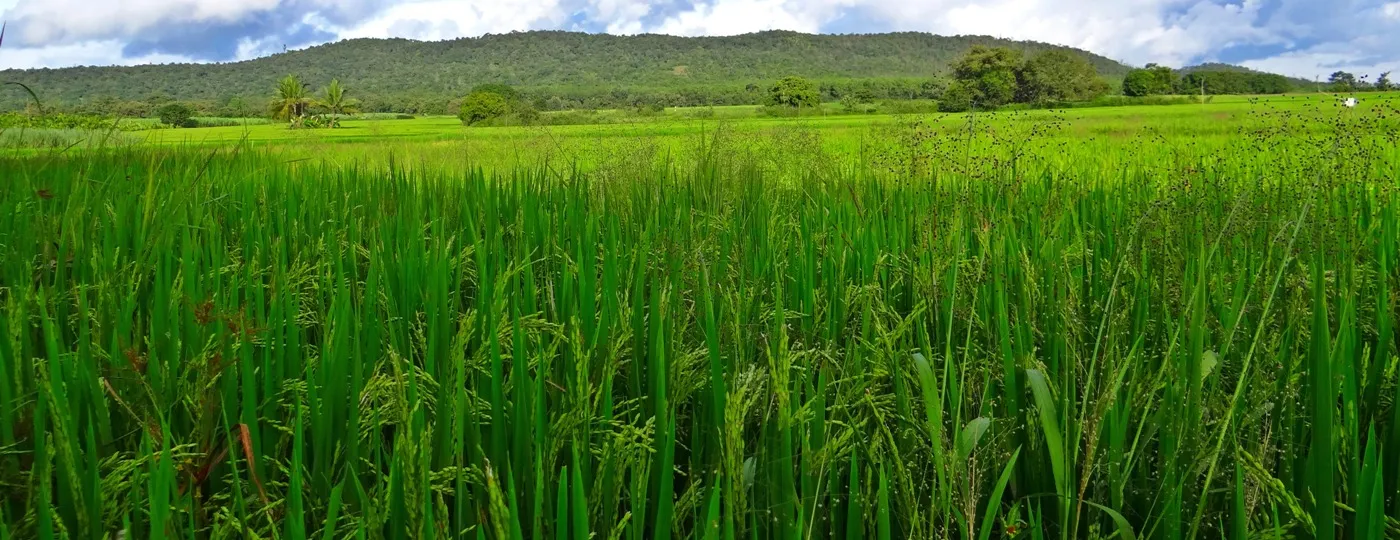The first milestone of the new government - the unveiling of the Budget - was widely hoped to be a magic pill to cure the ailing economy. In this context, the debutant finance minister, Mr Arun Jaitley, has presented a Budget that is both cognizant of the past mistakes and a blueprint for the future. Several commentators have deemed it to be a 'no big bang' budget. However, they fail to recognise that it is not only positive but presents one of the few realistic plans for the country. While certain aspects of the new budget may be perplexing to some, especially the abundance of Rs 100 crore allocations and memorial projects, the budget has presented a variety of steps that should return some confidence in the Indian economy.
The budget for 2014-15 has taken into account that national resources have been depleted at an unprecedented rate and that allocations made to garner popularity are not in the best interest of the country or the economy. Contrary to popular expectations, the government has adopted a two-pronged strategy. It has not only focussed on growth-garnering sectors, but has equally emphasised a social development agenda. For example, the FM has highlighted the importance of skilling the labour force, launching the Skill India programme and opening more IITs and IIMs. He has also stressed the need for following a more sustainable path - allotting Rs 1000 crore for new and renewable energy and targeting total sanitation by 2019. This two-pronged strategy offers a balanced solution to economic issues while realistically attempting to reduce fiscal burdens.
This analysis showcases the allocations for key sectors across the Indian economy. It follows the trends of the budgetary allocations from 1990 up to the present with the hope of generating an evidence-based debate on the positives and negatives of this year's budget.
Infrastructure
Transport infrastructure is crucial for both developmental and industrial progression. Thus, budget allocation for infrastructure has been steadily rising over the years, as can be seen from the graph. While it has been growing moderately since the National Democratic Alliance's (NDA) tenure, 2009-10 saw a sharp hike of about Rs 10,000 crore. Since then, it has resumed a steady climb.The new government's budget seems to have followed this trend. The allocation of Rs 1000 crore for accelerating rail connectivity is a wise move in terms of both business interests and the integration of the region to the rest of the country.
Defence
Allocation for defence expenditure has been one of the most keenly awaited sections in what has been termed the Super Budget. Protection of the country's territory is not only important to attract foreign capital but also to facilitate development and poverty reduction. While defence expenditure allocation increased by very small margins during the Indian National Congress's (INC) tenure in the 1990s, it began growing steadily during the NDA's government, rising to over 50,000 crore in 2001. This trend continued during the UPA government's tenure, seeing a sharp spike in 2009, and eventually reaching over 2 lakh crore for the first time in the last year of the UPA regime (2013-14). The NDA government (2014-15) has also maintained this rise, and the budget allocation has risen to 2.29 crore. The following graph examines the components of the 2014-15 defence Budget in detail.
Components of the Defence Budget
As one can see from the graph, the NDA government (2014-15) has increased the share of revenue expenditure for defence. One of the major reasons for this is the Rs. 1,000 crore boost that the government has provided to the 'One Rank, One Pension' scheme. Apart from this pension scheme, there has also been an increase in wage allocations for the various defence forces. However, one must note that defence on a whole has experienced a 12% rise. Thus, when one examines capital expenditure on a stand-alone case, it has increased albeit less than revenue expenditure. Additionally, due to the increase in foreign direct ownership limit to 49% in the defence sector, the defence capital industry is expected to experience significant growth.
Plan versus Non-Plan Expenditure
Both -plan and non-plan spending - experienced steady increases during the NDA's reign. This trend continued into the UPA government's 10-year tenure; non-plan expenditure, especially, saw a large increase during 2008-2011. As can be seen from the graph, both types of expenditures were almost equally allocated in the early 1990s; however, since then the gap between the two has been steadily increasing due to faster growth in non-plan expenditures. The widening gap has been maintained by the new NDA budget; there has been a very small increase in planned expenditure, but non-plan expenditure has seen a large spike bringing it to over 12 lakh crore rupees.
Police Expenditure
The budget allocation for police expenditure has been increasing at a steady pace throughout the years. The allocation saw steady increases during the UPA's reign, with a large spike in 2009-10, and a higher rate of increase after that. The new NDA government seems to be following this trend, causing a near linear increase. The biggest gainers include the Delhi Police and the Central Reserve Police Force, with increases of Rs 400 crore and Rs 800 crore respectively. The government has also set aside Rs 150 crore for a scheme that aims to increase safety of women in cities. Additionally, the Finance minister, in his budget speech, spoke about the importance of the police forces and earmarked funds for the National Police Memorial.
Expenditure on Elementary Education
Allocationon elementary education has been on a smooth rise with a drastic hike in 2005-06.The new Budget's allocation for this sector highlights the importance given to primary education. While y-o-y increase from 2012-13 to 2013-14 was 8%, the increase in this Budget from the previous year is almost double (15%). This prioritization of elementary education is especially welcoming given the fast approaching deadline for the Millennium Development Goal of achieving universal primary education.
Expenditure on Secondary Education
Education has been high on the agenda for most governments. The UPA government's (2004-05 to 2013-14) budget allocations have on average seen the highest increases especially post 2006-07. Though it must be noted that the Rashtriya Madhyamik Shiksha Abhiyan (RMSA) has been allocated Rs 4966 crore in the current Budget, an increase from the Rs 3983 crorefrom the previous Budget's allocation, budget for secondary education on the whole has fallen moderately.
Expenditure on University & Higher Education
With the increasing demand for a skilled labour force, higher education has been accorded high priority even among the various education levels. The change in the allocations over the years supports this assertion. This trend was visibly started by the NDA in the beginning of the millennium and followed by the UPA government. The last decade has especially seen a considerable rise. However, the higher education 2014-15 budget has seen a 16 percent y-o-y decline. This may be because the new government has shifted focus to more professional degrees as observed in the rise in the technical education budget.
Expenditure on Technical Education
The Finance Minister's Budget speech emphasised greatly on developing a skilled population through the establishment of five IITs and five IIMs and the proposal of launching the skilling programme called Skill India. In line with this, budget allocation on technical education has experienced a moderate 0.8 percent increase from the previous year.Thus, the new government is not only inviting investments, but at the same time it is working on creating a labour force that is capable of exploiting these conditions efficiently.
Allocation for Rural Development
The rural development ministry was set up by the previous NDA government, in 1999-2000. Since then it has become an important part of the budgetary allocations. Budget allocation has been increasing steadily over the years, but the percentage change from year to year has on an average decreased. The largest jump in budget allocation from the previous year was in 2009-2010, when the allocation for the ministry jumped by nearly 99%. Since then, the trend of budget allocation has started to decrease and in 2012-13 had a negative percentage change from the year before. In the 2014-15 budget, allocation has increased by 8% from the previous year, which is a major leap especially when one considers the 1% rise in the year prior.
Drinking Water and Sanitation
Even after announcing a Rs 3000 crore budgetary allocation in rural drinking water and promising sanitation in every household by the year 2019, the total budget allocation in drinking water and sanitation has increased only marginally by Rs 6.15 crore since the previous budgetary allocation. The change, from Rs 15,260.70 to Rs 15,266.85 is perhaps in light of the fact that in the previous year, revised estimates show drinking water and sanitation to have under-spent their budgetary allocation. In 2013-14, actual spending amounted to only Rs 12,006.24 crores by the Ministry.
Health and Family Welfare
In 1990, the Health & Family Welfare budget allocation stood at a little under 1000 crores. During the INC's five year stint in power, the allocation increased at a slow pace. This trend of slow increase continued throughout the United Front's reign. The NDA's six year reign saw a slight acceleration in the growth rate of the allocation. In the UPA's 10 year reign in from 2004-2014, the allocation grew at an increasing rate, climbing from around 7500 crores in 2004 to over 30,000 crore in 2014. The new government has increased the previous year's allocation by Rs 2,418 crore.
Subsidies on Fertilizers
The fertiliser subsidy allocation remained almost consistent throughout the end of the 1990s and the beginning of the 2000s, notwithstanding a small rise and consequent fall during Atal Bihari Vayjpayee's NDA government reign. Itthen began to rise during the beginning of the UPA's reign. However, it remained volatile during most of the UPA's second five-year reign from 2009-2014.Having said this, the overall trend shows a large increase in the allocation, from about 15000 crores in 2007 to a little over 35,000 crores in 2013. The new NDA government's regime has again hiked the fertiliser subsidy by around 10,000 crores.
Mahatma Gandhi National Rural Employment Guarantee Act
The Mahatma Gandhi National Rural Employment Guarantee Act was introduced by the UPA government in 2006. Budget allocation for the program grew from a little over 10,000 crore to about 15,000 crore from 2006 to 2009. In the first budget of the re-elected UPA government that was presented in 2009, the program experienced a budget increase of about 150% to almost 40,000 crore. For the next three years, it remained almost constant at this level. The allocation dropped by a little over 5,000 crore in 2012. The new NDA government has increased the allocation by a 1,000 crore to 34,000 crore.
Grants to Foreign Governments
India has had a long history of providing grants to foreign governments. This sub-section of the Official Development Assistance (ODA) saw its largest increases between the years 2011-12 and 2013-14. In these three years, grants to foreign governments grew at an average of 34.9% year on year. However, in the 2014-15 Budget, the budgetary allocation for grants to foreign governments has only grown by 4.3%, the lowest since the year 2007-08, wherein the growth in grants was negative, perhaps due to the GFC. In fact, the current budgetary allocation for such grants is the lowest positive (increase in funds) change since 1990-91.
The views expressed above belong to the author(s). ORF research and analyses now available on Telegram! Click here to access our curated content — blogs, longforms and interviews.




 PREV
PREV


